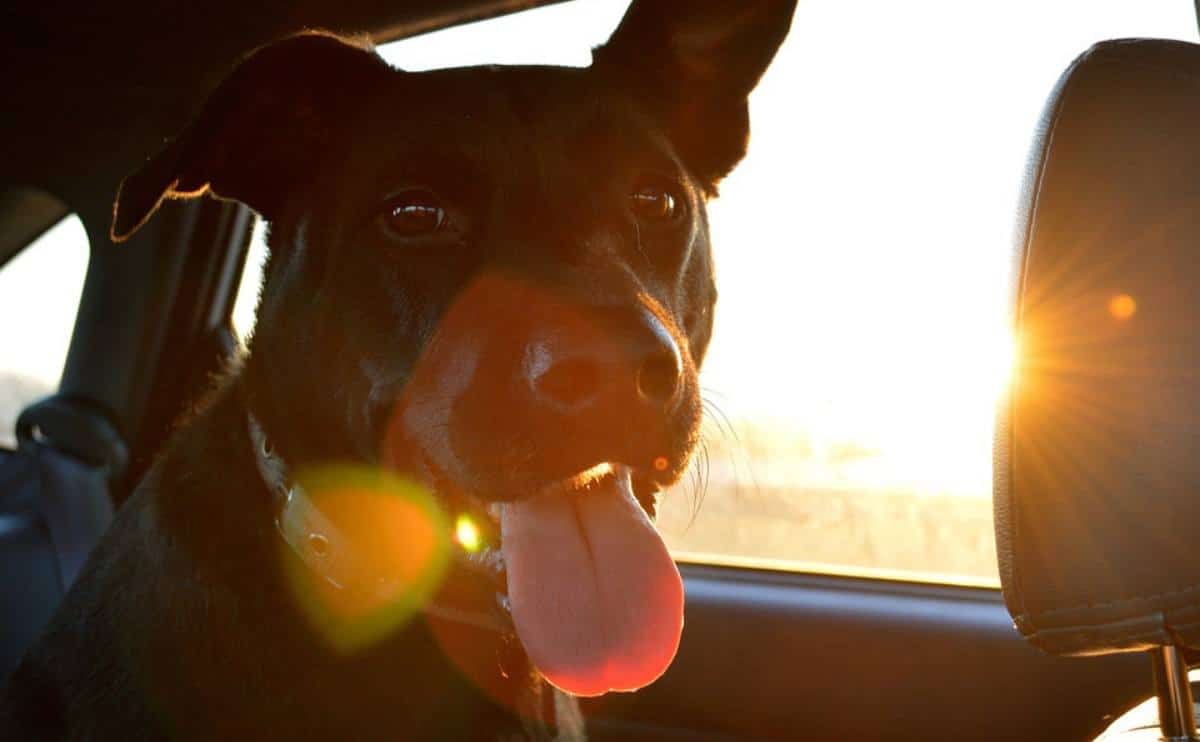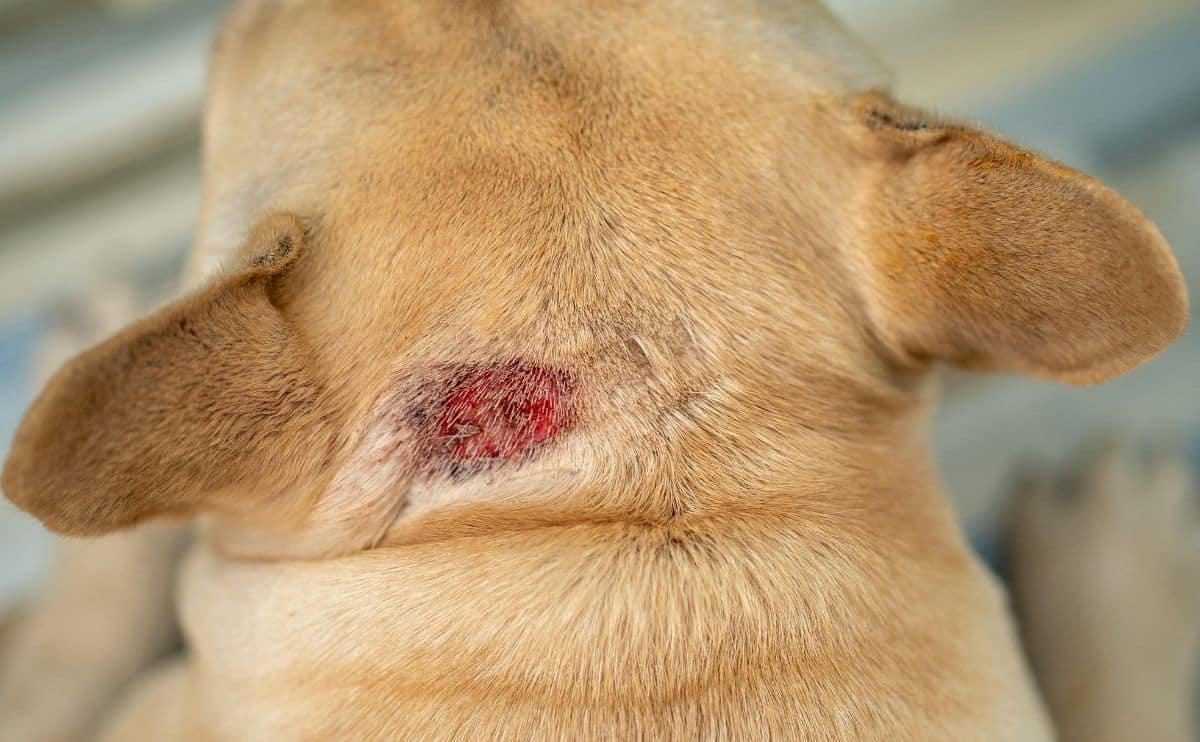Intervertebral Disc Disease (IVDD) In Dogs: Symptoms, Treatment & Prevention
When you purchase through links on our site, we may earn a commission. Here’s how it works.
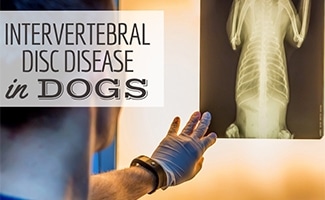
Intervertebral disc disease (IVDD) in dogs is a condition in which the cushioning discs between the spinal column bones (vertebrae) move or bulge into the spinal canal. The discs then push on the spinal cord or the nerves around it and cause pain, nerve damage, and can even lead to paralysis. Intervertebral disc disease, also referred to as a slipped or herniated disc, is caused by degenerative disc disease. Here’s what you need to know about IVDD and how you can help your dog.
Table of Contents
What Is An Intervertebral Disc?
Intervertebral discs are the structures that sit between the bones of the spine. They consist of a soft center inside a harder, fibrous ring and act as cushioning or a shock absorber for the spine.
What Causes IVDD In Dogs?
IVDD is a degenerative condition caused by the aging of the discs between the spine bones (the vertebrae). As these discs age, they become less gelatinous, harder, and less cushion-like. The discs bulge or move out of position instead of compressing when the vertebrae move together (herniate).
Some dog breeds are more at risk of IVDD and can suffer disc problems when they are younger. At-risk breeds are often chondrodystrophic breeds — this refers to dogs with abnormal cartilage. Many chondrodystrophic breeds have disproportionately short limbs and long backs and include breeds, such as Daschunds, Basset Hounds, Lucas Terriers, and Shih Tzus.
In one large study published in the Journal of the American Veterinary Medical Association, researchers analyzed medical records of more than 27,000 dogs from the UC Davis veterinary clinic to compare the incidence of 24 genetic disorders in mixed versus purebred dogs. They found that the risk of IVDD was significantly higher in purebreds. The breeds with the highest rates of IVDD in this study were Daschunds, French Bulldogs, Pekingese, Pembroke Welsh Corgis, and Doberman Pinschers.
What Happens When The Intervertebral Disc Is Diseased?
Once the disc is diseased, the risk of a slipped disc increases. Slipped discs broadly fall into two categories depending on how the disc material moves or herniates.
Type I Disc Herniations
Type I disc herniations, also known as extrusions, are where the material in the center of the disc comes out of the fibrous ring and injures the spinal cord – like the jam exploding out of a smashed donut. These are more likely to cause symptoms that are rapid in onset and occur in chondrodystrophic breeds. They can happen at any age, including in young dogs.
Type II Disc Herniations
Type II disc herniations, also known as protrusions, are where the fibrous ring outside of the disc thickens and compresses the spinal cord or the nerves around the spinal cord. These are more likely to cause slower onset symptoms, and the risk increases with age.
What Are IVDD Symptoms In Dogs?
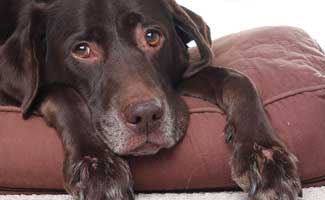
The symptoms dogs show with intervertebral disc disease vary depending on the damaged spinal cord area and the severity of the condition. Dogs may appear wobbly on their legs, have neck or back pain, or lose the ability to move one or more legs. Severely affected animals may become paralyzed, incontinent, or lose the ability to feel pain in their legs or tail.
In general, injuries to the neck result in all four limbs being affected. In contrast, injuries to the back result in just the hind legs being affected.
Some of the common symptoms dogs exhibit with IVDD are:
- Abnormal walking – Dogs may appear unsteady on their legs or wobbly when walking.
- Hunched back or neck with tense muscles – This can be a sign of neck or back pain in dogs. Dogs with neck pain may be reluctant to lift their head up or lower it to the ground to eat or drink.
- Crying out in pain – Dogs’ back or neck pain may present as yelping, unwillingness to move, sitting or lying in a different posture than usual, or vocalizing when being picked up.
- Loss of bladder or bowel control (urinary and fecal incontinence) – Dogs with IVDD may leak urine when sitting down or be unaware that they have passed feces. Depending on the location of the nerve damage, some dogs cannot empty their bladder to pass urine.
- Paralysis – Dogs may lose the ability to use their legs or drag their legs when trying to move if the nerve damage is severe.
These signs can occur slowly (over several weeks to months) or rapidly (over minutes to hours). Most dogs will show signs developing over a few days.
If your dog is displaying any of these symptoms, it’s essential to seek immediate veterinary advice. Early diagnosis and treatment could prevent paralysis or even save your dog’s life.
How Is Intervertebral Disc Disease Diagnosed?
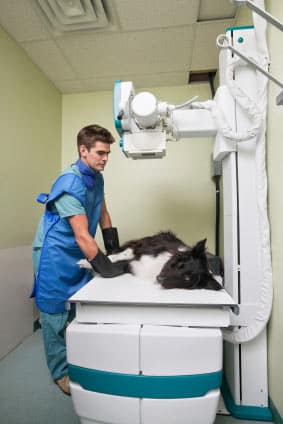
Your veterinarian will examine your dog’s neurological function by feeling the back and neck, testing the reflexes in the legs and tail, and assessing your dog’s ability to feel pain in the legs.
If your vet suspects IVDD in your dog, X-rays can show an abnormal area in the spine. However, X-rays can’t specifically show the spinal cord, so your dog may need other forms of imaging.
A CT (computed tomography) or an MRI (magnetic resonance imaging) scan may be required to locate the spinal cord injury.
Sometimes, your vet or surgical vet will inject a special dye that can be seen on an X-ray into the area surrounding the spinal cord. This is known as a myelogram. These tests require your dog to be put under general anesthesia.
Treatment
Treatment of IVDD in dogs depends on the severity of the damage to your dog’s spinal cord or how likely the damage is to progress. Your vet will likely recommend either conservative management or surgery for IVDD — let’s look at both options.
Treating IVDD In Dogs Without Surgery
Conservative management may include medication to control your dog’s pain and reduce swelling along with strict exercise restrictions. Intervertebral disc disease is excruciating — pain management for IVDD in dogs will require several prescription medications, usually including opioids.
Exercise restrictions may involve strictly resting your dog in a crate or cage with very controlled, restricted walking in a short time frame. The length of time your dog needs to rest depends on your dog’s specific injury and rate of healing. It’s important to follow the advice given by your veterinarian carefully.
Dogs with IVDD who don’t get surgery (recommended by their vet) will need frequent check-ups with their veterinary surgeon to assess their progress. Some dogs may benefit from physiotherapy or hydrotherapy during their recovery. Always seek veterinary advice before starting these activities if you suspect your dog has an intervertebral disc problem.
If there’s more severe nerve damage or risk of paralysis or incontinence, conservative treatment may not be enough. In these cases, your vet will likely recommend surgical treatment.
Surgery For IVDD In Dogs

Some dogs will need surgery to treat their IVDD, commonly a laminectomy. This is a specialist procedure that can only be performed in certain hospitals by experienced vets. It involves removing a portion of the bony vertebrae over the spinal cord. A laminectomy relieves the pressure on the cord, reducing pain and enabling it to function normally.
Dogs that have spinal surgery will often stay in the hospital after the operation to monitor recovery and provide pain medication. After surgery, dogs will need time to recover and rehab, which likely includes stringent exercise restrictions.
Home Remedies For IVDD In Dogs
You cannot treat IVDD cannot at home. If your dog is showing signs of disc disease, then you should seek urgent veterinary advice.
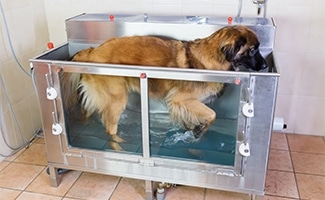
You can do many things to help your dog recover from intervertebral disc disease and keep him comfortable. This may involve doing massage therapy or physiotherapy exercises with your dog. However, it’s important to follow instructions given by your veterinary surgeon carefully and always ask for advice before attempting these exercises. Remember, IVDD is very painful, so getting your pup to a vet for strong pain relief is essential.
What Is The Prognosis For Intervertebral Disc Disease In Dogs?
The prognosis of IVDD varies greatly depending on the type of disc disease, the severity of nerve damage, the dog’s age, and response to treatment.
Many dogs make a full recovery and regain the normal use of their legs. Unfortunately, some dogs may have irreversible nerve damage leading to abnormal nerve function in the legs, reduced bladder or bowel function, or even paralysis. Sadly, these dogs don’t have a good quality of life, and your vet may recommend euthanasia for these dogs.
If your dog gets through the rehabilitation period after IVDD, his life expectancy is the same as any other dog. However, he’ll be at risk of further back problems, so you should do what you can to minimize the risk and act quickly if you see signs in the future.
Preventing IVDD In Dogs
If your dog is an at-risk breed for IVDD, keeping him at a healthy, lean weight will help reduce the stress on his spine and other joints.
Limiting strenuous exercise such as jumping can also help. Small dogs should avoid jumping on and off furniture or into cars as this could be too high for them and put a lot of pressure on their back. Use steps or a ramp to help your dog get into the car or on furniture safely.
Get Your Dog Insured
We recommend that if your dog’s breed is predisposed to IVDD, you consider purchasing pet insurance. Fortunately, pet insurance covers IVDD as long as there are no pre-existing symptoms for it, so it’s crucial to sign your pet up for insurance before issues arise.
Some pet insurance companies have additional waiting periods for orthopedic conditions (including IVDD), typically around six months, but once the six months have passed, any potential IVDD concerns should be covered. Our pet insurance reviews can teach you more about which companies we recommend and what they offer.

